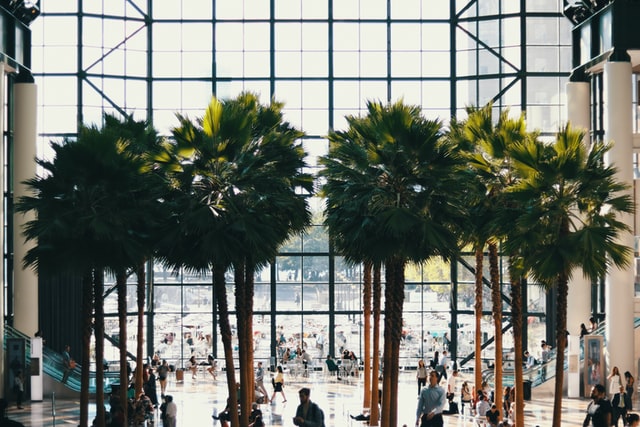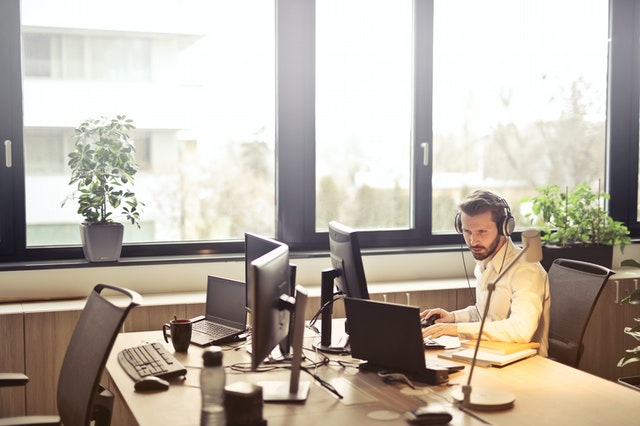As countries administer Covid vaccines, and as the latest coronavirus wave hits the world, workplaces reopen in the new year. What many thought was a short schtick in 2019/2020 has turned out to be one of the human population’s most deadly viruses ever to strike. The order of the day remains cleanliness, social distances and limited physical encounters.
The coronavirus pandemic has no greater exemplary impact than its effects on modern-day working culture. In order to promote social distancing in the workplace, more and more firms choose to operate from home or follow a hybrid working style. Giant tech corporations in Silicon Valley, including Facebook, have famously launched this new trend in response to Covid. This, however, raises experts’ questions about the feasibility of sudden implementation of a remote style of work, as there is abundant fear of creating a “ghost town” in these business districts. Mundane workplace practices such as having a short copier conversation or bumping into a coffee machine colleague seem to be so in 2019 as many employees are now working from home, and the few who come in are expected to socially distance themselves. Humans are social beings, and it can be argued that to emotionally connect with our coworkers, we need a minimum amount of regular human contact. But what role will interior design play to intercept this gap?
A bright ray of optimism shines this year as corporations steadily physically restart across the globe. Businesses have come to adapt to this modern way of living and functioning, even as the second coronavirus wave continues to ravage the rest of the world. Some go back to the traditional offices and reinvent the way they operate, despite covid, in order to sustain an increasing work culture. “So the question is, “How will the interior design of the workplace improve in response to the Coronavirus in 2021? ”
This article will discuss some of the growing adaptations to design and forecast how for the rest of the new year the modern workplace may become different.
Nature
Natural materials are, without a doubt, a wonderful mental therapy that can help to maintain a balance within our physical world. In part, this is due to the organic essence of natural elements that appear to dissipate positive energy in what the Chinese may know as the Feng Shui principles throughout the workplace.
2021 may see an increase in the introduction into the workplace of natural elements such as stone, wood, or indoor plants. In the shape of green walls, heavy set planters with elegant flamboyant indoor plants, or a water feature in the reception room, these elements can be integrated into the workplace design. The powerful influence of simple natural lighting, however, seems to be underestimated by many. Natural lighting can rapidly turn the workplace into a center of innovation and excitement from a factory-feel closed-off space. If their atmosphere motivates this enthusiasm by suggesting some “psychological freedom” influenced by nature, workers may appear to be enthusiastic about what they do.
Nevertheless, when strategically implemented in the workplace, green plants give a similar effect. Low-maintenance and cost-effective planting options will be the most productive choice of greenery because of the design of the workplace. As desirable and convenient as faux planting can seem, it should be heavily avoided, we say.
Maintaining the distance
Workplace designs can see a slight change among workers to accommodate social distancing steps. The open-plan office style has been adopted by various corporations in recent years as an efficient way to reduce the politics of internal hierarchy and improve interpersonal relations in the workplace. This design feature, however, can prove to be more than a cost-saving and psychologically-motivational feature. This design feature, however, can prove to be more than merely a design feature that is cost-saving and psychologically motivated. The solution to reducing the spread of the virus could also be open office plans, since they provide greater flexibility in following the 6-foot social distance measures placed in place by most government authorities. As an institution, cubicles and crowded office spaces might be a thing of the past.
Workplaces have started to follow what is now known as the hybrid work style to further embrace the need for social distancing, where a proportion of their workers work from home while the remainder resume at physical office locations. Often, to minimize crowding in the workplace, this arrangement is alternated among employees.
We may begin to see an increased demand for collaborative instruments that support completely or partially distributed working arrangements in response to this. For a multimedia tool such as Zoom, 2020 has already seen a crazy boom that allows workers to hold virtual meetings and sessions on a whim.
Slack, Zoho workplace, or other co-working platforms that help employee collaboration and bridge the physical gap brought on by the Coronavirus pandemic are additional tools that could see increased demand. The introduction of desk-booking systems to help employee communication and bridge the physical distance created by the Coronavirus is one of these arrangements made by some businesses in Sydney. The creative approach to human behaviour, in which workers have increased the popularity of virtual cocktail sessions or parties, is worth noting. This was hardly a thing before the pandemic!
On the other hand, the demand for linked whiteboards, such as Google’s Jamboard, Microsoft’s Surface Hub and Samsung’s Flip, could increase. It is expected that these visual tools will dramatically increase the seamless collaboration of dispersed teams in the workplace. With this, routine workplace tasks such as brainstorming, regardless of the workers’ geographical positions, can be carried out concurrently and as a team. This is a welcome evolution of technology in the new workplace.
As far as architecture is concerned, we may see a growing pattern where, based on the degree of allocation of the team layout, fewer actual desk spaces are assigned to workers. Companies may also aim to incorporate innovative technical features in the physical workspace outside cooperation. This takes us to our next step, which is technology without touch.
Contactless technology
The deployment in the workplace of contactless technologies to curb the transmission of the virus is a no-brainer. With the immediate concern being health and safety, in a scenario that had previously involved physical interaction, businesses could continue to implement voice-activated devices or motion sensors like coffee machines that are voice-activated, doors with motion sensors or even contactless faucets.
For instance, at 363 George Street, TAL’s new office interior features some of the technology. For the technical community, this is a great leap forward as it would eventually normalize the use of Ai in the office, without a doubt. In addition, a great architectural innovation is Zaha Hadid Architect’s new headquarters for the Bee’ah waste management business in Sharjah, UAE. With contactless characteristics that require minimal physical interaction among its consumers, the interface is lush. The future of industrial workplaces might be this.
Sustainability and flexibility
For decades now, with the roaring Australian fires and the melting ice caps, sustainability has been on the human conscience, but the coronavirus has been by far the most awakening event to get people to actively make environmental architecture choices. This is due to the awareness that what normalcy might be of a transient sort. Familiarity had easily swept from under our feet the previous year and replaced it with utter fear and confusion. It is fair to conclude that many firms have started to make choices that they feel will be more competitive and versatile, with unexpected shifts that could arise over time.
Colour
Color in the physical workplace has long been an important determinant of employee perceptions and moods. In reaction to the coronavirus pandemic, color will now more than ever play a massive role in the new architecture of the workplace. Color psychology may affect how comfortable or effective the workers can be in their physical environment.
Workplaces seek to introduce warmth to the workplace in many respects without disrupting employee efficiency. In doing this, the use of color can play a significant role. In public recreational spaces such as the lunchroom, vibrant colours such as yellow may increase excitement, whereas a neutral colour such as white may encourage imagination. The ultimate choice of colors will rely on your brand and the surrounding atmosphere you want to create inside the office in any given room.
Final thoughts
As we increasingly recognize the new way of living, the new year is predicted to see a strong evolution in the contemporary workplace. Intelligent design and technology have continued to enable us, in reaction to environmental uncertainties, to strategically change or develop our way of life. Even as the second phase of the coronavirus pandemic begins to increase concerns, our way of functioning will have to adapt in response to the impact of these new strains of the virus.
It is important that workplaces rapidly put steps into action to respond to the pandemic situation while maintaining employee health and safety at the forefront of their considerations in order to stay significant and to continue flourishing.

